Pioneer Refinery Recent Photos

Overview of refinery site looking south. Refinery on left. Pump house on right. The pump house had nothing to do with the refinery. It was built after the refinery was shut down. (Photo taken on 7/17/2010)
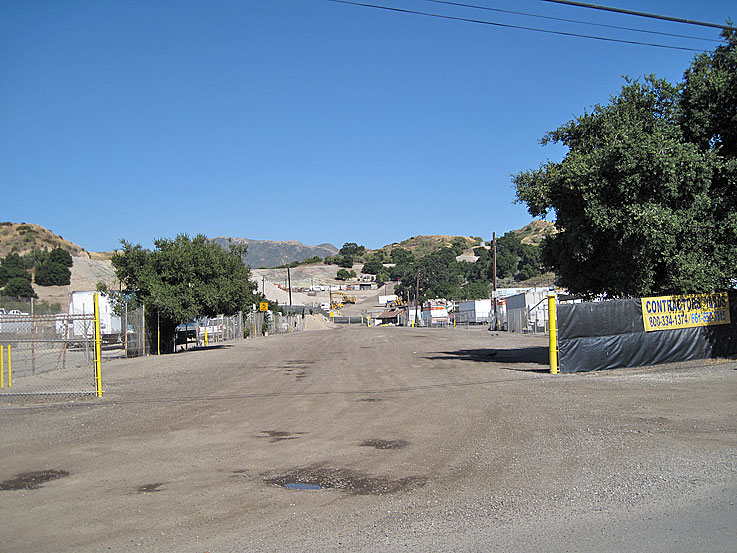
From Pine Street, looking east down the dirt road toward the refinery site. (6/19/2010)

The dirt road is occasionally maintained. (2/4/2012)
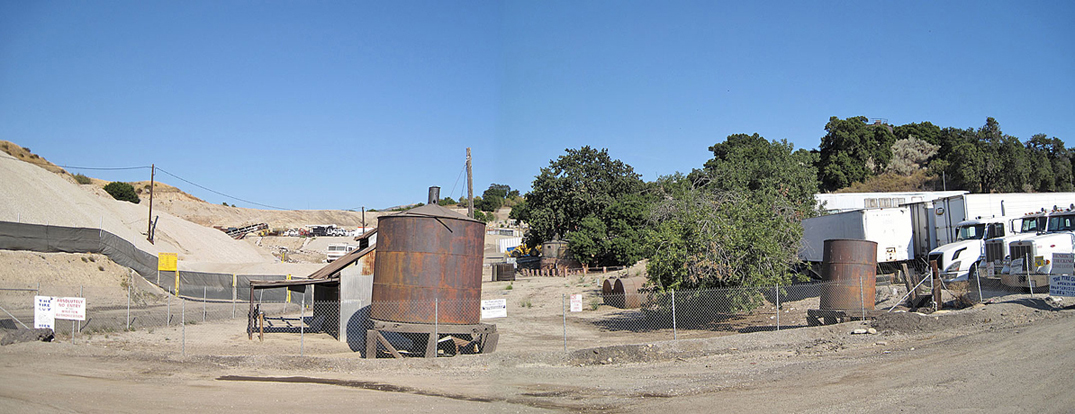
Just about at the refinery site. It is at the intersection of two dirt roads, one going to a recycling company on the left (with the yellow sign) and the other to the Tire Guy on the right. (7/17/2010)
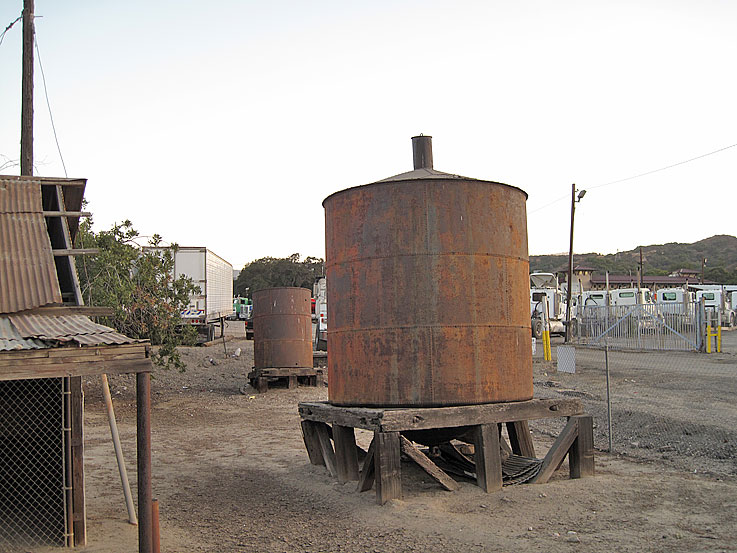
Acid tank with wash tank in the background. There were other tanks on the refinery site at one time, but they are gone. In the historic photo taken on the dedication day in 1930, you can see another tank at the very right of the photo. (7/17/2010)
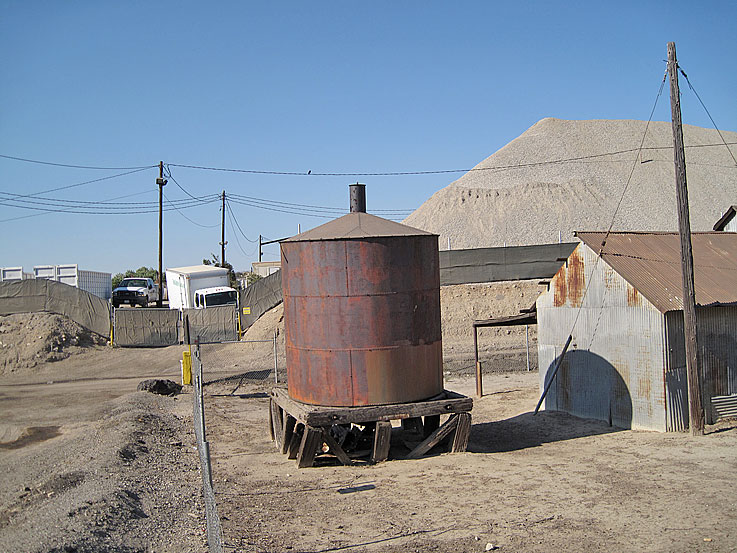
Opposite view of acid tank. It almost collapsed in the 1994 Northridge earthquake and the base looks ready to cave in at any time. After distillation, the oil was mixed here with sulphuric acid to separate out all the foreign ingredients such as tar and sediments. (7/19/2010)

1930 restoration sign says "Acid treating tank" (7/17/2010)
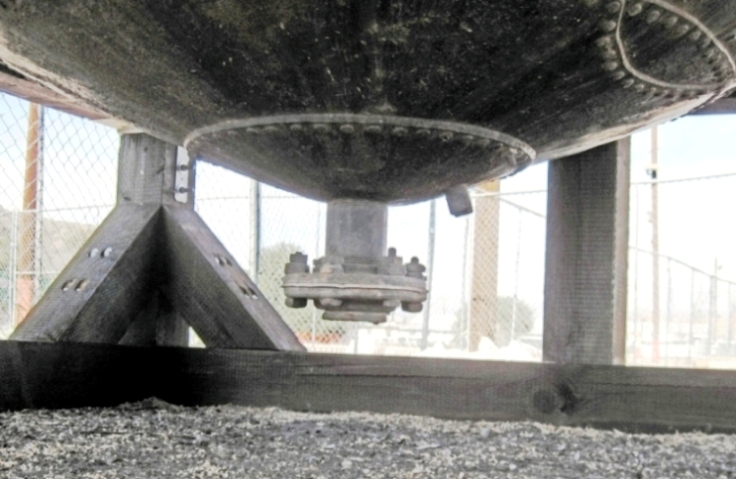
Here is the bottom of the acid tank (2/8/2021).

After treatment in the acid tank, the oil is transferred to the wash tank, where the acid is removed. The base for this tank is also close to collapsing. (8/14/2010)
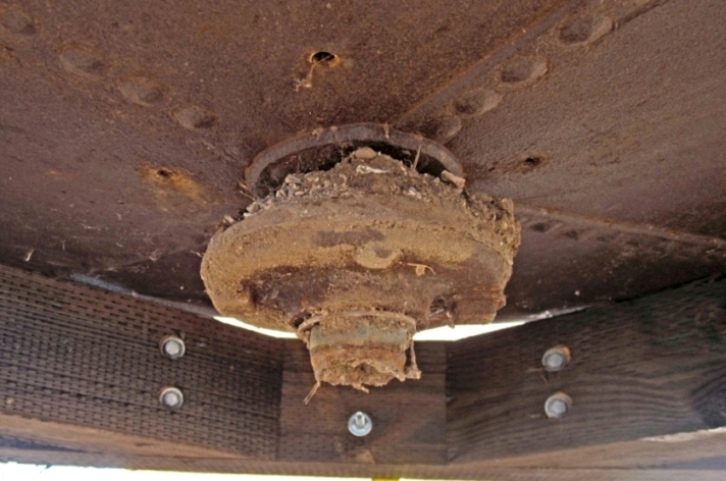
Here is the bottom of the wash tank (2/8/2021).
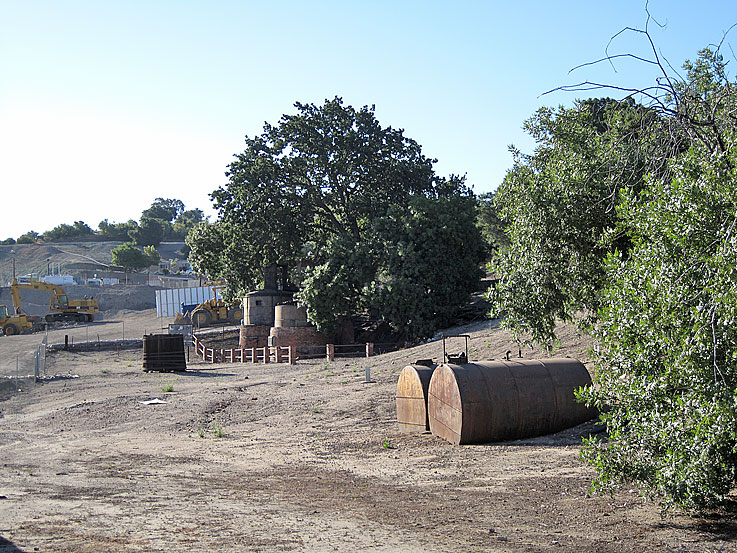
It has been said that these are the kerosene and benzene storage tanks. However, in the rear there is a pipe connected the two tanks. Can the two different liquids be stored in containers joined like that? (7/17/2010)

View of tanks from opposite direction (north) looking at the pump house. I cover the pump house on a different web page. (3/10/2012)
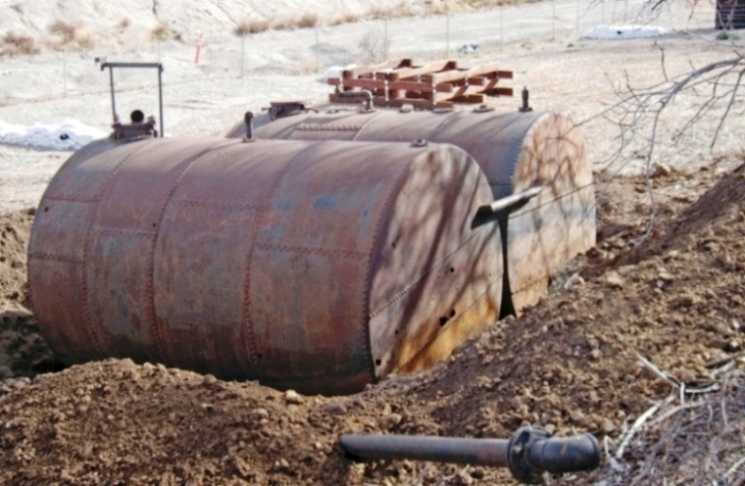
View of the rear showing the pipe joining the two tanks. This was taken on February 13, 2021, when the tanks were being prepared for storage at another location while the construction of the in the surrounding area industrial park was in progress.
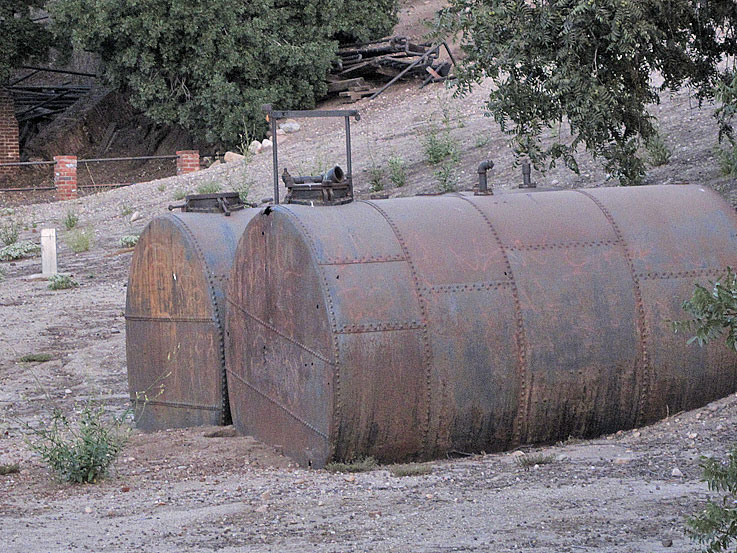
Closer view of the two tanks. (7/19/2010)
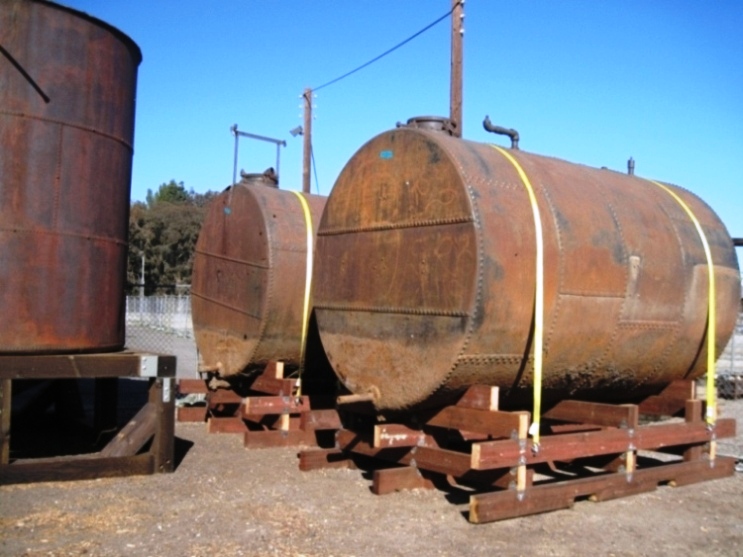
After the tanks were moved to another site for storage in February of 2021. (2/19/2021)
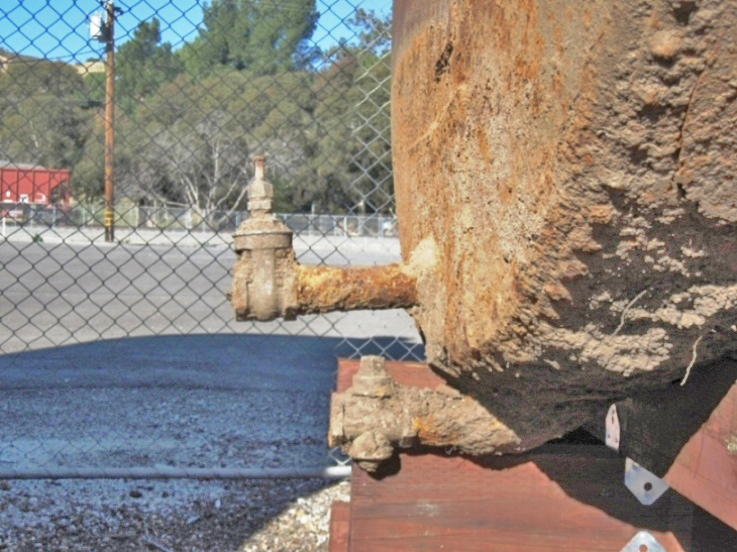
Closer view of drainage pipes on one of the tanks. Bottom pipe is missing on the other tank, but it was once there. (2/18/2021)
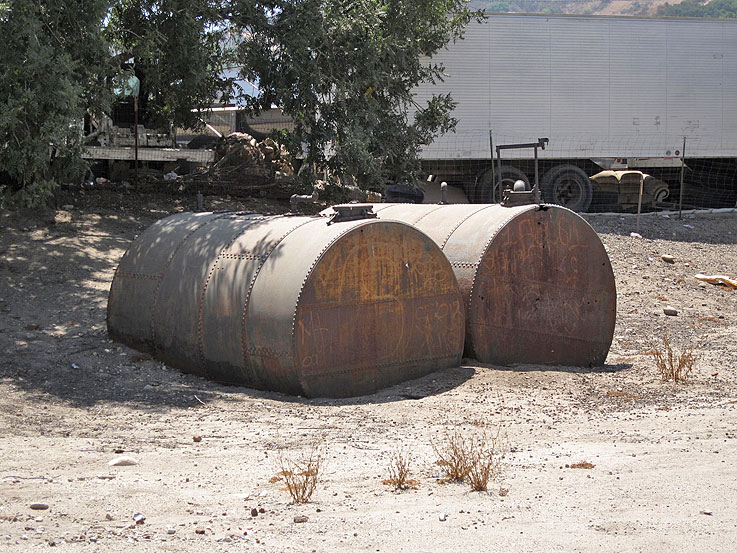
Another view of storage tanks. You can just make out the old graffiti. (8/7/2010)

View of the remaining stills. On the hilltop to the right is one of two large crude oil storage tanks. Crude oil flowed to the refinery by gravity, however, the tanks on the hill today are not the original tanks. (6/20/2010)
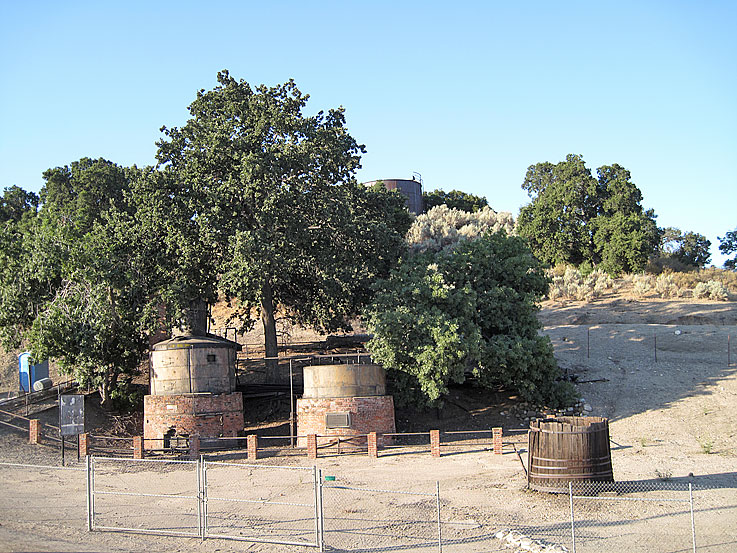
Closer view of the stills. These are still #4 on the left and still #3 on the right. Stills 1 and 2 and the boiler were removed by Standard in early 1961 to be shown at their Richmond Oil Museum. Although the museum is long gone, the stills and boiler are still at the site and in excellant condition. (7/17/2010)
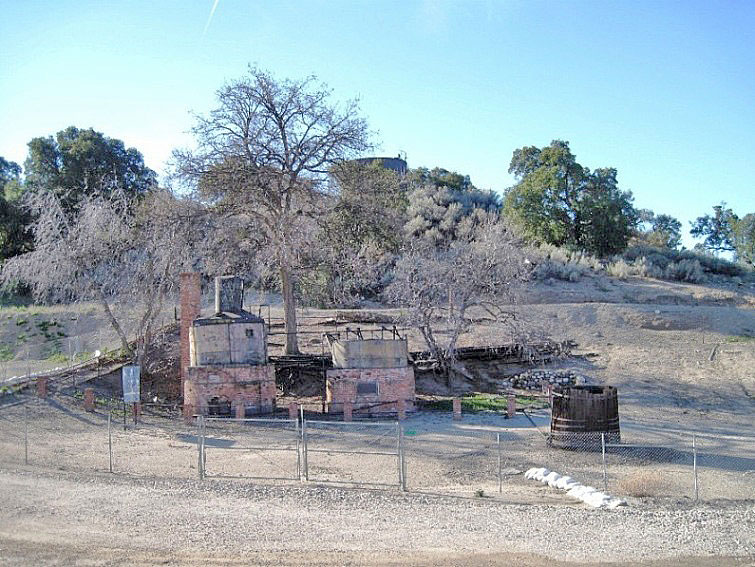
Same view at different time of year. (2/4/2012)
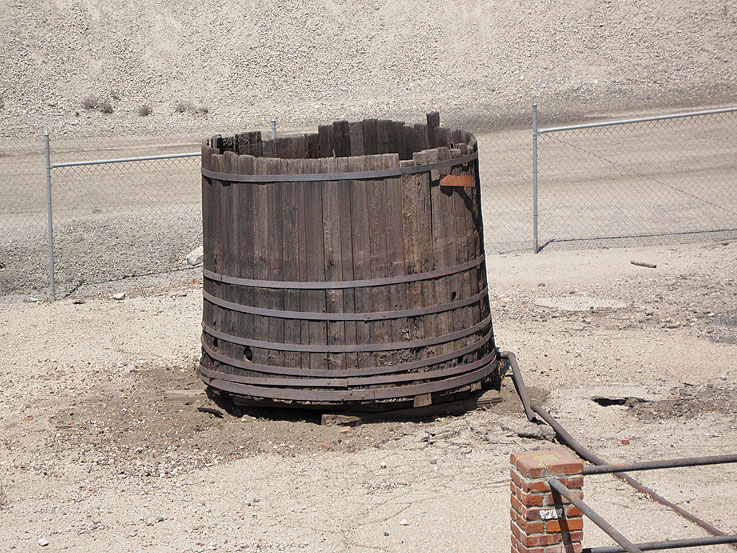
The tank in front of the stills. (8/7/2010)
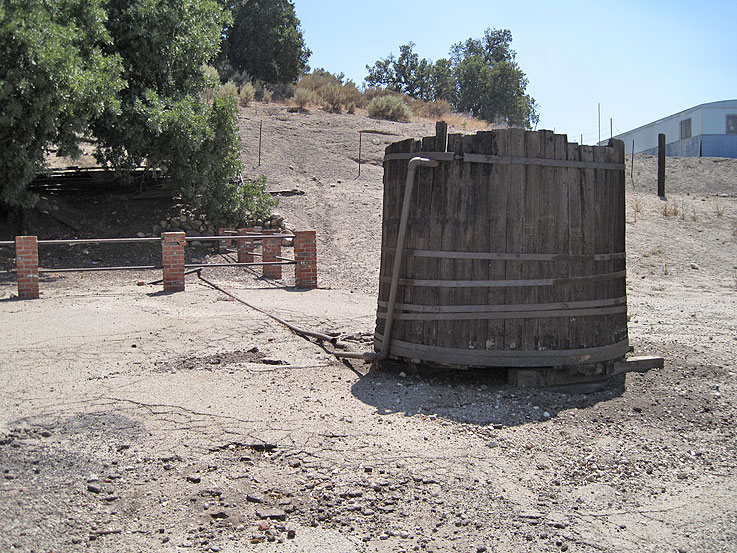
Another view of tank showing pipe going toward stills. The residue from the stills was drained into this tank. Some of it was used to make an oil sold to railroad companies. The rest was reused as fuel for the stills. (8/7/2010)
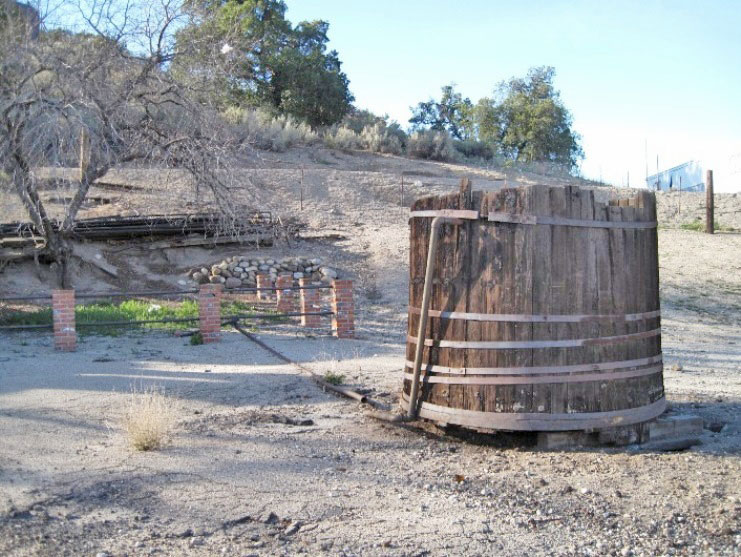
Same view at different time of year. (2/4/2012)
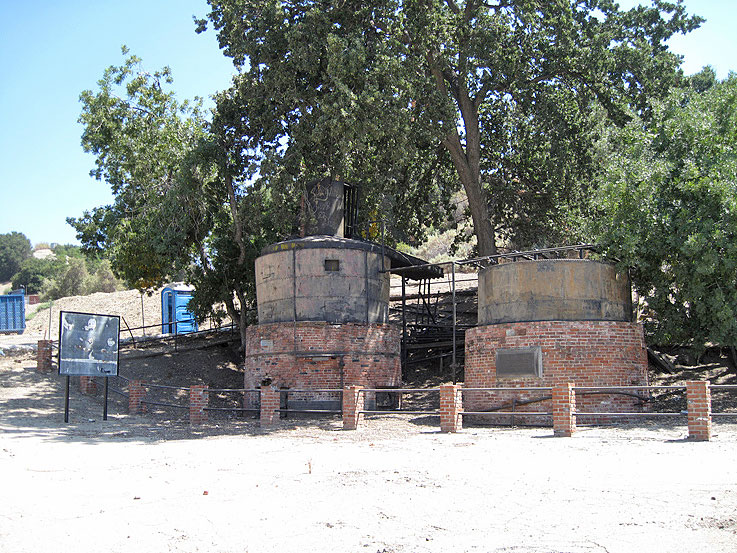
The sign at the left of the stills is no longer readable. There is an old photo of it on the refining page. (8/7/2010)
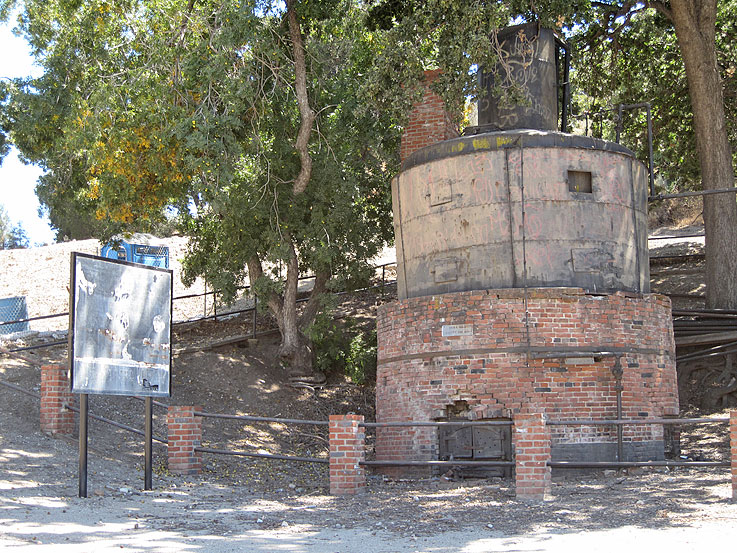
Closer view of the sign and Still #4. (8/7/2010)
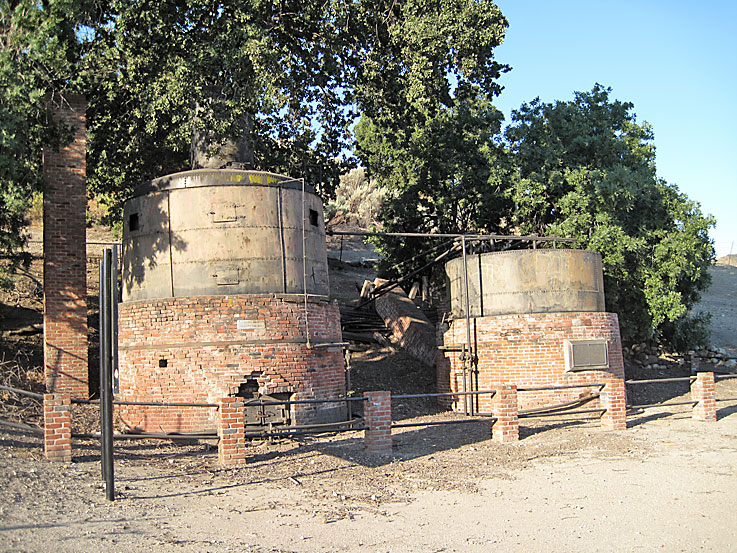
The whole site was restored in 1930. You can see the plaque on still #3 on the right. You can also see the brick damage on still #4 and the collapsed chimney behind still #3. This damage was caused by the 1994 Northridge earthquake. (7/17/2010)
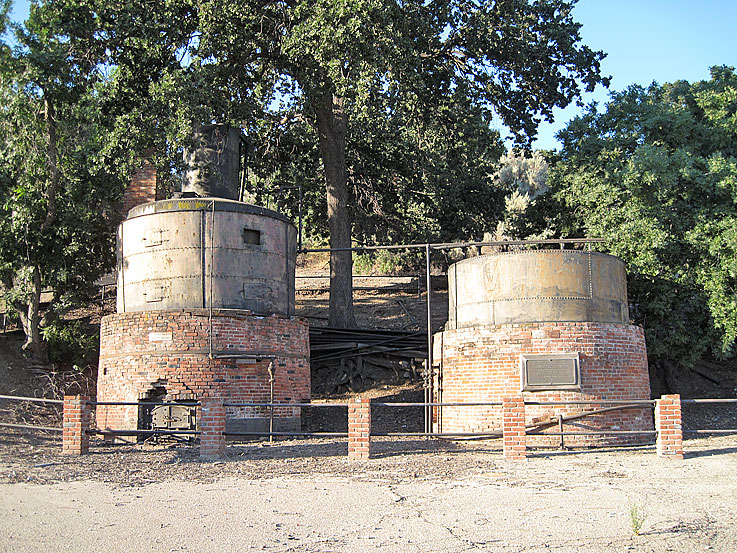
Still #4 on the left and still #3 on the right. (7/17/2010)
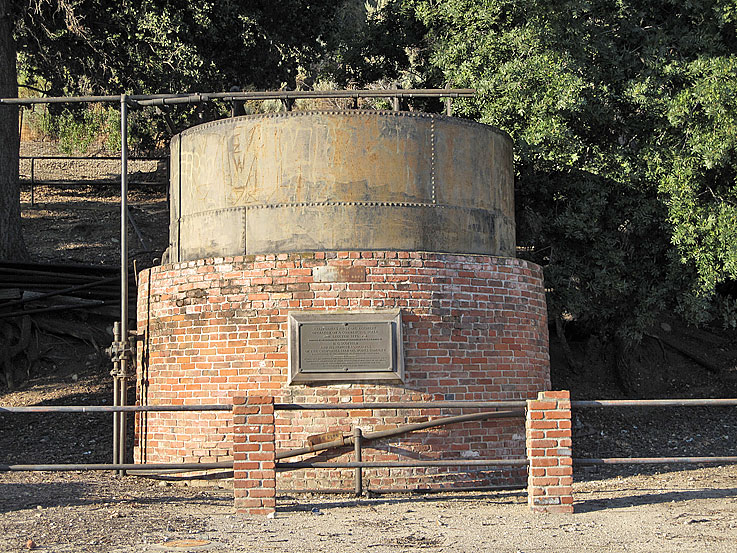
Closer look at still #3 showing the commemorative plaque (see history page for what it says). Note also the old graffiti on the still. (7/17/2010)
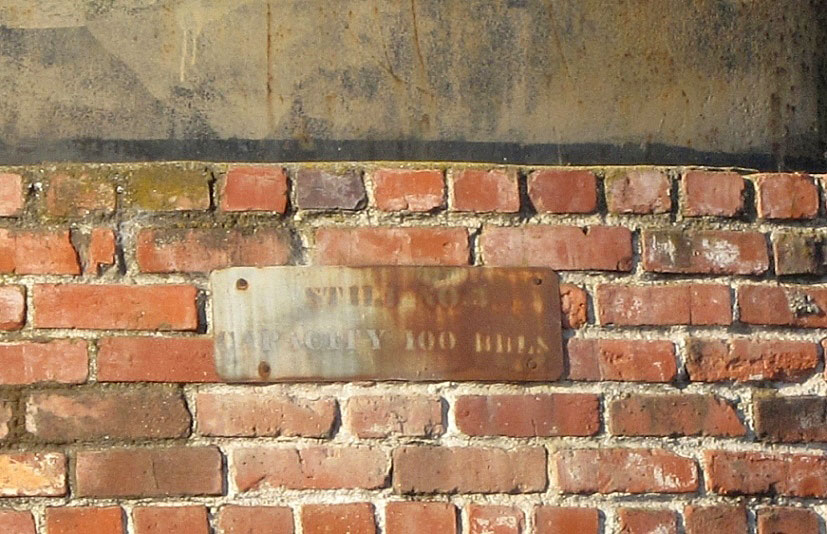
Above the commemorative plaque is this small sign saying that Still #3 has a capacity of 100-barrels (4200 gallons: 1 barrel = 42 gallons). (7/17/2010)
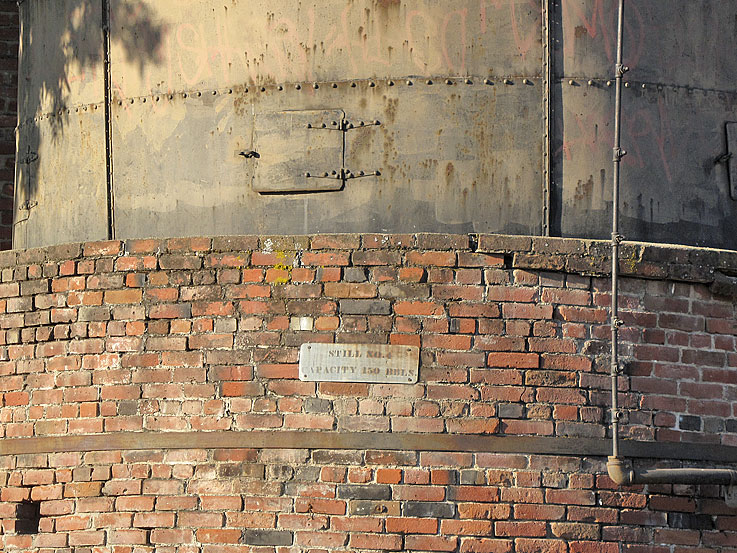
The small sign on Still #4 says that it has a capacity of 150-barrels (6300 gallons). (7/17/2010)
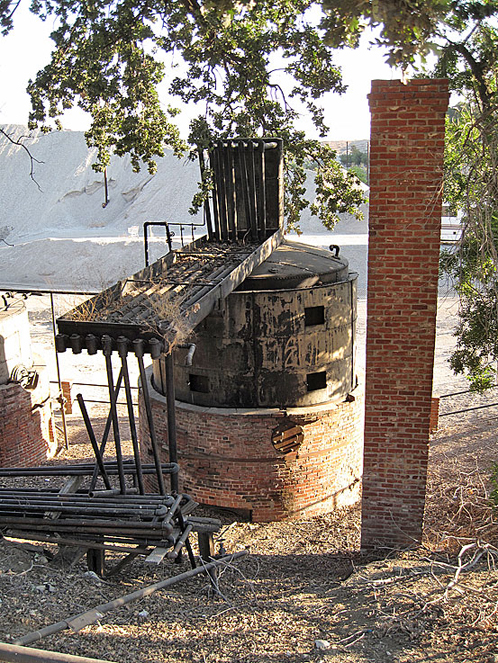
From the rear of the Still #4. (7/17/2010)
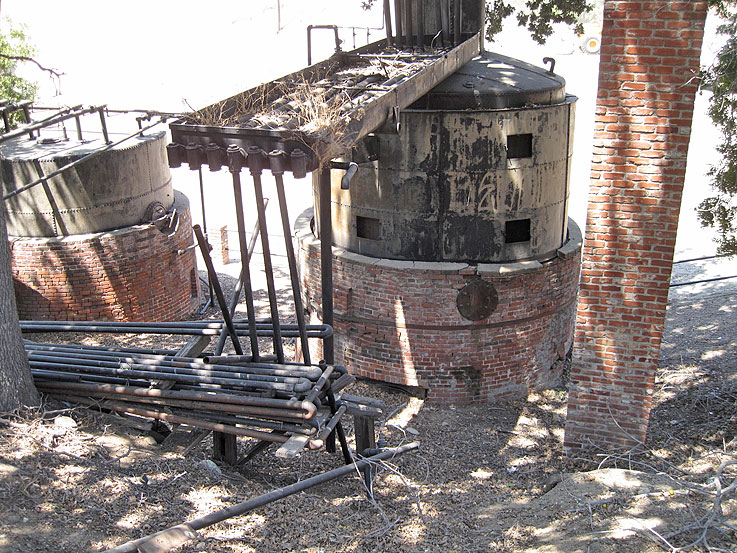
A little closer view of Still #4 showing the pipes of the condenser. There were 1,400-feet of two-inch and three-inch iron pipes immersed in water enclosed in a 5-ft x 5-ft x 125-ft wooden trough. The wooden trough obviously no longer exists. (8/7/2010)
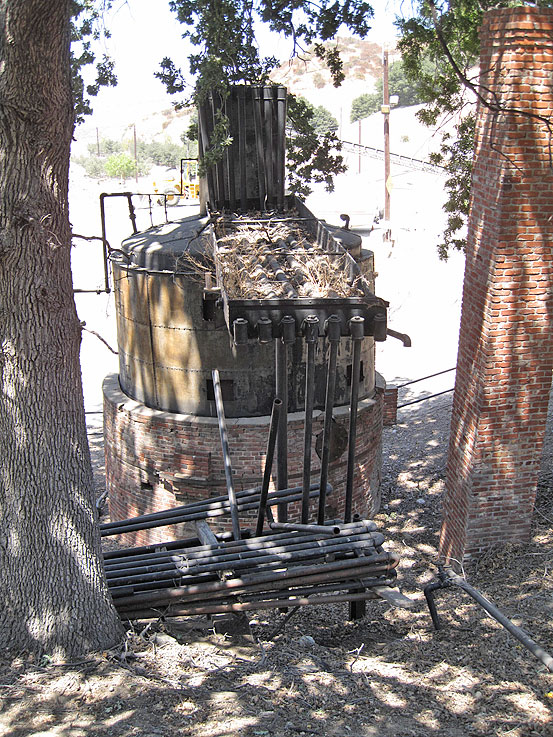
A slightly different angle. (8/7/2010)
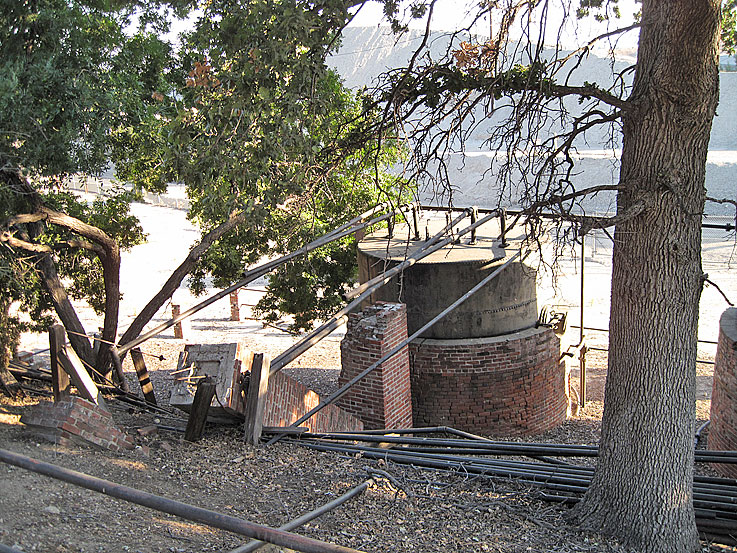
The rear of still #3 showing the fallen chimney. Both chimneys were filled with concrete when they restored in 1930. (8/14/2010)

Sider view of chimney on top of the condenser pipes. (8/14/2010)
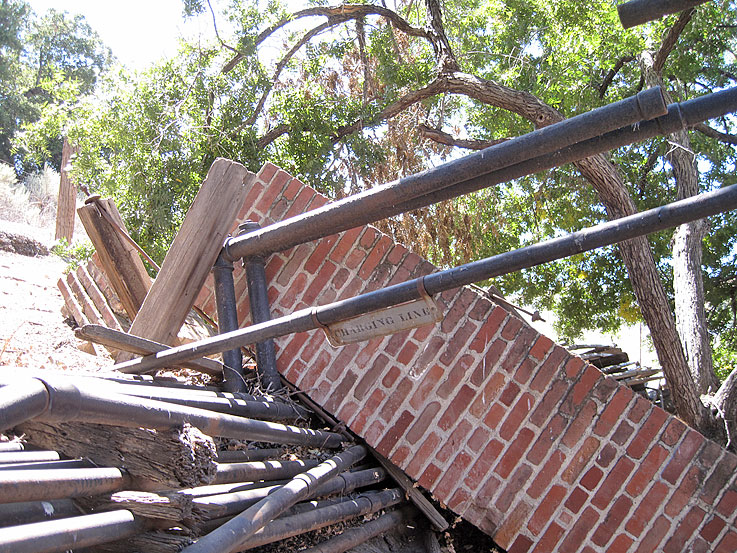
Still closer view shows the squished condenser pipes. One pipe has a sign saying Charging Line. This is the pipeline used to transport fresh crude oil from the tank to the still. (8/14/2010)

Another view. (8/14/2010)
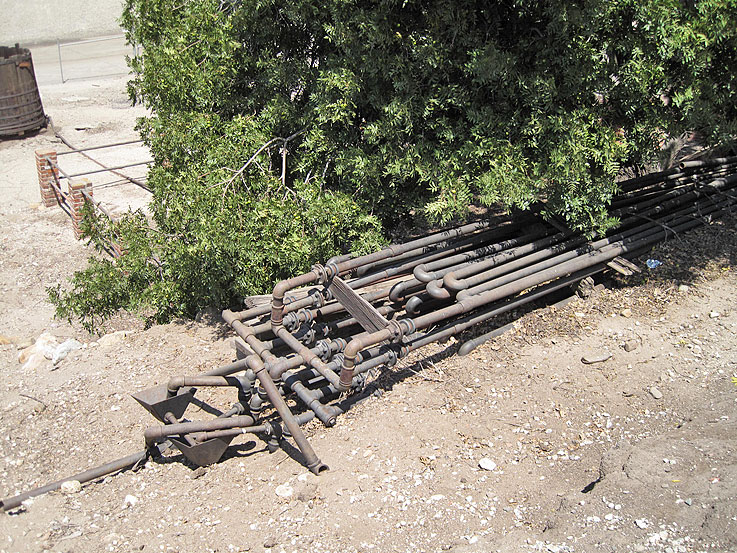
View of the end of the condenser pipes. They were enclosed in a large wooden trough, now missing. The distilling oil flowed from top to bottom. (8/7/2010)
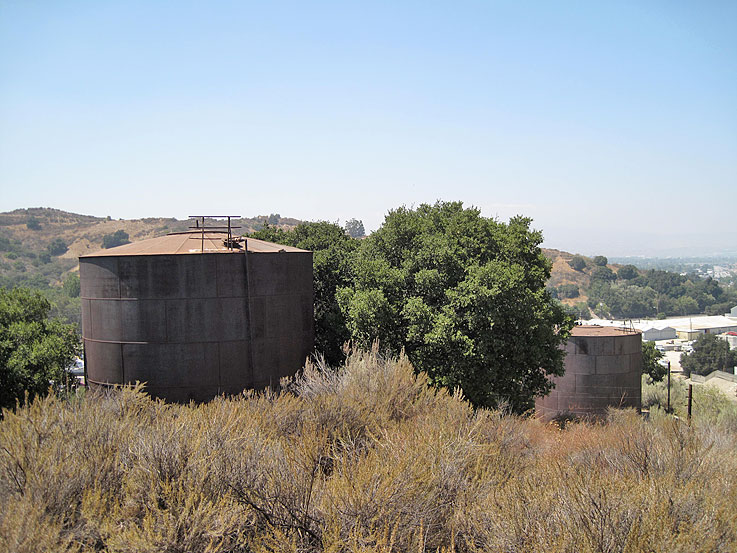
On top of the hill to the south of the refinery are these two large storage tanks. They are not the original storage tanks for the refinery which had tanks of 20 and 100 barrels (White 1962). These are much larger. I measured the two tanks and the one on the left has about a 1935 barrel capacity and the one on the right has about a 2145 barrel capacity. Also, the pipe connections and pipes from these tanks extend directly toward the railroad tracks, not toward the refinery. Don Ball tells me that oil was still shipped out from here by train until 1943. The oil must have been stored in these tanks before being transferred down to the trains for transport. (8/7/2010)
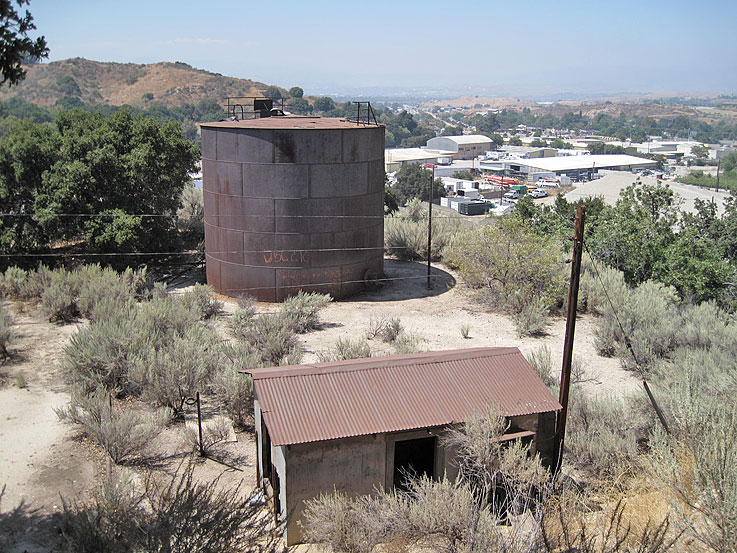
The lower tank is on this flat area with the little building. The refinery site under the trees on the middle right. (8/7/2010)

Looking inside the building. There is an electrical circuit box attached to the outside of the building. It looks like for some reason crude oil passed through here. There are two pipes coming into the building. (8/7/2010)









































